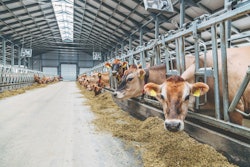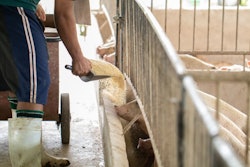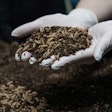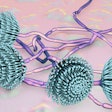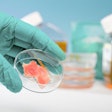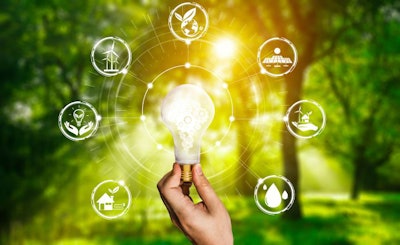
2021 Food Systems Pre-Summit session focuses on how animal agriculture fights food insecurity but how a one-size-fits-all sustainability strategy is unrealistic
In late July, the United Nations hosted the Pre-Summit for its 2021 Food Systems Summit, which will be held in September. The Pre-Summit or “People’s Summit” was meant to reaffirm its commitment to ensure all invested groups have an “opportunity to participate in, contribute to and benefit from the process.”
The three-day event brought together many agricultural stakeholders to explore “the latest evidence-based and scientific approaches to food systems transformation from around the world, launch a set of new commitments through coalitions of action and mobilize new financing and partnerships.”
Based on the U.N.’s 17 Sustainable Development Goals, the feed industry plays a part in fulfilling Goal 2: Zero Hunger.
During the panel discussion, “Global Resource Use Efficiency for Protein Production in Food Systems,” ruminant nutrition and sustainability experts discussed how animal protein production supports human food security.
Here are three key take-aways from the session:
Big picture changes
All the experts agree: There is no one-size-fits-all solution when discussing ways to improve the sustainability of global food systems.
“Frankly, we have as many livestock production systems in the world as almost we do producers,” said Dr. Jude Capper, professor and ABP Chair in Sustainable Beef Production, Harper Adams University. “To assume that we’re just talking from a U.S. or European perspective is untrue. We must think globally but act locally as well.”
The best solutions lie in strategies and innovations appropriate and applicable to all livestock systems worldwide.
“It’s very important to understand that a livestock farmer in Kenya with two cows is absolutely not the same as [a Western] one with 1,000 cows,” Capper said. “They have different challenges, different infrastructure, different soils, different climate, different levels of income — you know, all of these things.”
For those who may suggest reducing or eliminating animal protein production for plant-based diets, Capper was careful to note the nuanced benefits of animal agriculture. For example, many people around the world rely on their poultry flocks and livestock for more than food: those who rely on it “for their income, their health, their education,” she said, also noting the importance of animal byproducts, e.g. pharmaceuticals, manure, leather, etc.
“No two farms are the same. Therefore, we have to find solutions, tools, technologies and management practices that can be applied across the globe — with due regard for the culture, the region, the challenges, the climate — and then to have better outreach to apply them,” Capper said.
Knowledge share key to success
Based on the FAO’s report, “Tackling climate change through livestock,” if the top 10th percentile of production practices were applied across the board to become the new global average of global animal protein productions, “we could actually lower greenhouse gas emissions 30% and keep output constant,” reported Dr. Sara Place, Elanco Animal Health chief sustainability officer.
Relaying the animal ag industry’s proven best practices and technologies to those who do not have them in place does present opportunities; however, Place cautions that it’s important to understand the barriers they face and realize these performance/sustainability gaps aren’t voluntary, e.g. access to vaccinations, disease prevention and good nutritional health status.
“There are simple ways to apply what we kind of take for granted here in developed countries, technologies and innovations that we have readily available to us,” she said. “And if we make sure that we can adapt these to other places in the world, we can improve their productivity and, hopefully, have the co-benefit of livelihoods, nutrition and reducing environmental impacts all at the same time.”
The panel agreed there are many opportunities for animal production to lower its environmental impact while producing high-quality nutrition to support the growing global population.
On the bright side, from an environmental and production perspective, such advances are underway. Ongoing and recently released research demonstrates reduced ruminant methane emissions through feeding and additive technologies, vaccines that target the methane-producing rumen bacteria and new equipment innovations.
“It is about doing everything better. And I know that isn’t the cool, sexy, high-tech answer, where if you just use ‘Magical Protein Powder A,’ you know, everything is solved,” Capper said. “We do have to do absolutely everything better on every single farm.”
Debunking resource competition
While there is some competition between humans and animals for food/plant resources, it’s not to the degree the public may assume.
Place cited an FAO report examining domesticated terrestrial species from around the world, noting that of the 6 billion tons of dry matter consumed by food animals every year, 86% is not directly in competition with human food.
In addition, there is variation across the species. Ruminant animals emit methane gas and have been central to climate change and agriculture dialogue but “actually compete far less directly with human food because of their unique digestive system,” Place noted. Meanwhile, poultry and swine tend not to emit methane, but do compete more directly with humans because they’re also monogastrics.
When faced with the but-what-about-the-humans argument, it’s good to point out that most feed is comprised of the byproducts or co-products of human food production and these waste products would otherwise be disposed of in landfills or burned (both bad for the environment).
“If you think about it from a sustainability perspective, [animal feeding] is essentially cycling nutrients through the system,” Place said. “One of the key benefits of having livestock in our food system is they’re able to take the parts of plants that we cannot consume, that are human inedible, and essentially upcycle them to higher-quality products, nutrient-dense foods and, hopefully, we’re able to tighten those nutrient cycles and minimize pollution.”
Place concluded: “Coming out of the Pre-Summit, it hopefully is that recognition that there isn’t going to be one solution. We all agree on these high-level goals and recognize that it’s there will be many ways to get there.”
To watch the Pre-Summit sessions on-demand, visit the Pre-Summit video archive.


